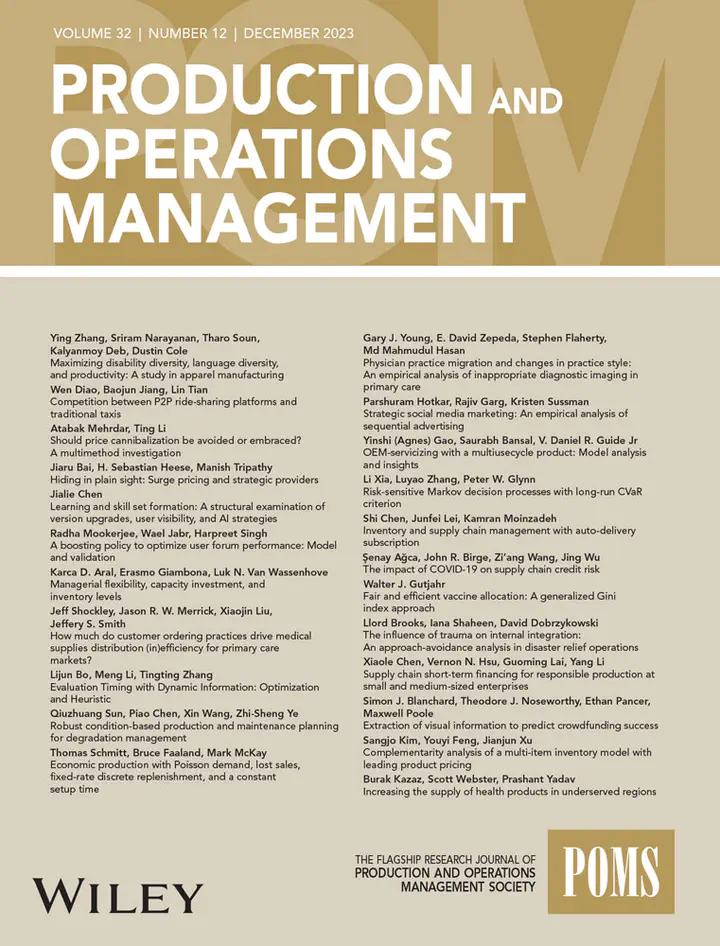Long-lasting Insecticidal Net Campaigns for Malaria Control Considering Prioritization and Equity

Abstract
Malaria remains a significant public health concern in several developing countries. Tropical weather, coupled with poor environmental and socioeconomic conditions, increases mosquito activity and disease transmission in impoverished nations. The most effective strategy to prevent and control malaria is the use of long-lasting insecticidal nets, or LLINs. Ensuring that LLINs are effectively and equitably distributed to those who need them most is crucial yet challenging, especially since financial and health resources are scarce in endemic countries. Through a real-world case study conducted in the Brazilian Amazon, which accounts for 99% of malaria cases in Brazil, we propose a Malaria Vulnerability Index (MVI). This composite index encompasses epidemiological, socioeconomic, and environmental factors. Using the MVI, we developed a prioritization-based location-allocation model to maximize the benefits of targeting the most vulnerable municipalities for malaria interventions. Our mathematical model relies on discrete coverage levels, which makes the allocation of LLINs more flexible while ensuring community-wide protection. We also explore the theoretical relationship between our proposed model and classical demand covering problems. Finally, we discuss some approaches to delivering more equitable solutions by minimizing the number of underserved areas. Our results include comparisons between various malaria interventions and provide practical insights. In particular, we show that we can drastically reduce the number of underserved areas without compromising the effectiveness of the LLINs allocation through lexicographic optimization. The results also reveal that with investment levels up to 50% of the ideal, we can fully protect the endemic area after two years of successive interventions.